CUSTOM JAVASCRIPT / HTML
The Best B2B Marketing Strategy In 2019
Written by Drop Servicing Blueprint
The Big Problem in 2019
How can B2B businesses solve this problem?
Do we use Social Media Advertising, Google Advertising?
Sure these channels work great, but only when you have the capital and understand how they work.
If you overshoot your spend here, your campaign will be a failure, and you’ll directly be feeding the behemoths colossal profit margins.
They can bring great results for B2B marketers with $4 Billion+ being spent with the big platforms.
However, this should only be a strategy for later in a companies life cycle (PPCLand).
But you should only use them if you have the knowledge (internally and externally) along with deep pockets.
Because at this point, they are very mature channels.
What this means is that competition is high, so we can try and compete but only if we have enough capital to handle the high cost per impression and ultimately high cost per acquisition.
With the high cost to compete on digital channels like Google and Social Media, you’ll get outspent by the big players, and if you’re just getting started on the platforms, you’ll need a massive war chest to handle that initial output.
So no, we won't use it, in the beginning (for cold traffic anyway).
What about SEO and content marketing… Social Media?
The rationale behind B2B Marketing and Outbound Strategies
Outbound Channels > Inbound Channels > Paid Ads
The Steps To Implement Your B2B Marketing Strategy In The Best Way For 2019
Now that we know an outbound strategy should be the first one we implement and the best approach to achieve growth for our business in 2019, we should lay out how to apply it right?
What we’re going to need is 1. Lead Generation 2. Sales Rep 3. Lead management 4. Lead outreach
If you’re already getting enough capital to invest in a few channels, then you can outsource those three things from the start.
Otherwise, you can do it yourself in the beginning.
The costs of this strategy can be meager, using Leadfuze for Lead Generation, yourself for Sales Rep’ing and yourself for lead outreach and management you can spend as little as $250-$500 per month.
Whether you’re doing cold emailing, social outreach, or direct mail, you will need all 4 of the above systems in place.
Let’s break down each step by step.
Outbound Systems and Automation
Outbound Channels
Take away lessons for your 2019 B2B Marketing Strategy
©2024 Dylan Sigley Consulting - FZCO
IMPORTANT: Earnings and Legal Disclaimers
The information, products and services offered by www.dropservicingblueprint.com, www.dropservicingpartner.com, Drop Servicing Blueprint, Drop Servicing Blueprint Partner Program and Dylan Sigley Consulting - FZCO (collectively, "Drop Servicing Blueprint Programs") are owned and operated by Dylan Sigley Consulting - FZCO (“Dylan Sigley Consulting - FZCO”, “we” or “us”). Earnings and income representations made by Drop Servicing Blueprint Programs are aspirational statements only of your earnings potential. The success of Dylan, testimonials and other examples used are exceptional, non-typical results and are not intended to be and are not a guarantee that you or others will achieve the same results. Individual results will always vary and yours will depend on many factors including but not limited to your individual capacity, work ethic, business skills and experience, level of motivation, diligence in applying the Drop Servicing Blueprint Programs, the economy, the normal and unforeseen risks of doing business, and other factors. Dylan Sigley Consulting - FZCO makes no guarantee of any financial gain from the use of Drop Servicing Blueprint Programs.
The Drop Servicing Blueprint Programs, Dylan Sigley Consulting - FZCO and Dylan individually, are not responsible for your actions. All materials and information we share are for general informational purposes only. We do not offer any legal, tax or other professional advice. You are solely responsible for your own moves and decisions and the evaluation and use of the information shared by Drop Servicing Blueprint Programs, our products and services, our softwares, third-party products and services and third-party softwares should be based on your own due diligence. You agree that we are not liable to you in any way for your results in using Drop Servicing Blueprint Programs and by your registration with the Drop Servicing Blueprint Programs you agree not to attempt to hold us liable for your decisions, actions or results, at any time, under any circumstance. See our Terms and Conditions for our full disclaimer of liability and other restrictions. Use caution and always consult your accountant, lawyer or professional advisor before acting on any information.

